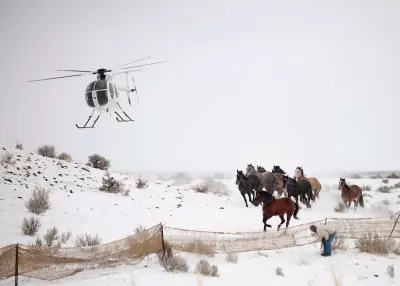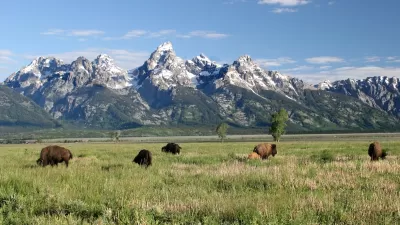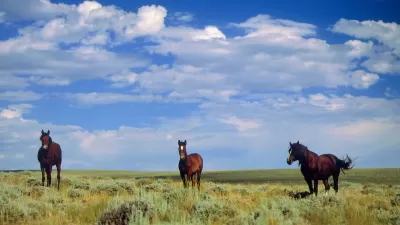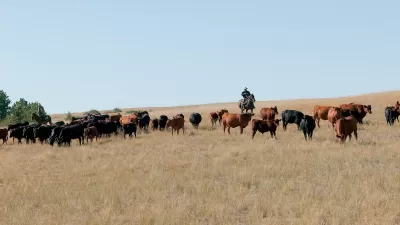Tens of thousands of wild horses still inhabit the western states. The Bureau of Land Management is caught between two camps: ranchers who want them contained and advocates who want them to roam free.

James McWilliams covers a rural land use drama: how to handle thousands of free-ranging wild horses. Currently, the Bureau of Land Management (BLM) contains many of the animals and attempts to control their movements. "The primary reason they're confined is the nearly 18,000 ranchers grazing an estimated 747,963 'animal units'—a bureaucratic term that can represent either a horse, a cow/calf pair, or five sheep—on 155 million acres of land."
Ranchers must compete with the horses for forage opportunities, a difficult task during drought. "They view the remaining 58,150 mustangs and burros roaming wild across 10 western states as invasive pests who gorge on precious forage and trample the landscape into hardpan."
Since the 1971 Wild Free-Roaming Horses and Burros Act, the BLM has been charged with protection and management of wild herds on federal land. "Because the BLM also issues grazing allotments to private ranchers [...] the agency is entrusted to balance wild horse and cattle populations on land where these animals overlap."
Many ranchers argue for drastic measures to contain the horses. But advocates say they're exaggerating the problem. "Of all the public grazing land the BLM manages (155 million acres), wild horses are technically allowed to graze on only 17 percent of it."
FULL STORY: Western Cattlemen Square Off Against 60,000 Mustangs

Planetizen Federal Action Tracker
A weekly monitor of how Trump’s orders and actions are impacting planners and planning in America.

Restaurant Patios Were a Pandemic Win — Why Were They so Hard to Keep?
Social distancing requirements and changes in travel patterns prompted cities to pilot new uses for street and sidewalk space. Then it got complicated.

Map: Where Senate Republicans Want to Sell Your Public Lands
For public land advocates, the Senate Republicans’ proposal to sell millions of acres of public land in the West is “the biggest fight of their careers.”

Maui's Vacation Rental Debate Turns Ugly
Verbal attacks, misinformation campaigns and fistfights plague a high-stakes debate to convert thousands of vacation rentals into long-term housing.

San Francisco Suspends Traffic Calming Amidst Record Deaths
Citing “a challenging fiscal landscape,” the city will cease the program on the heels of 42 traffic deaths, including 24 pedestrians.

California Homeless Arrests, Citations Spike After Ruling
An investigation reveals that anti-homeless actions increased up to 500% after Grants Pass v. Johnson — even in cities claiming no policy change.
Urban Design for Planners 1: Software Tools
This six-course series explores essential urban design concepts using open source software and equips planners with the tools they need to participate fully in the urban design process.
Planning for Universal Design
Learn the tools for implementing Universal Design in planning regulations.
Heyer Gruel & Associates PA
JM Goldson LLC
Custer County Colorado
City of Camden Redevelopment Agency
City of Astoria
Transportation Research & Education Center (TREC) at Portland State University
Camden Redevelopment Agency
City of Claremont
Municipality of Princeton (NJ)





























